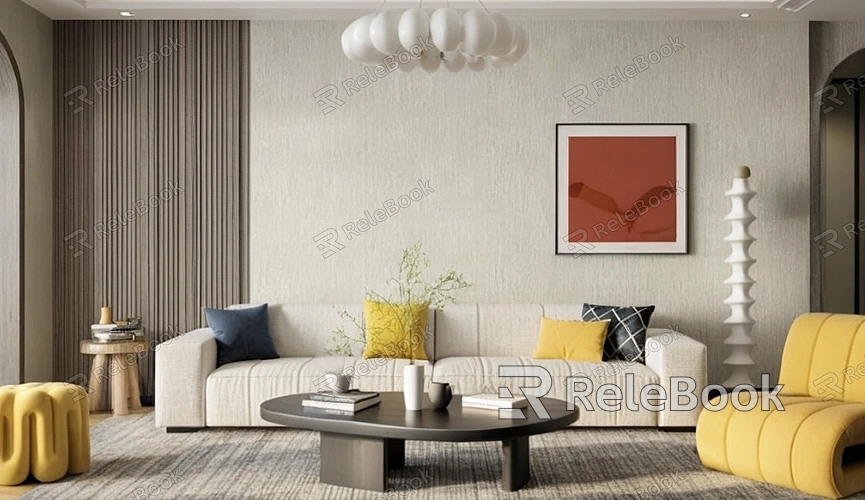How to Create 3D Models in AutoCAD?
With the increasing demand for design precision and visualization, 3D modeling has become an essential part of many industries. From architecture and engineering to product prototyping, 3D models provide designers with an intuitive and accurate way to showcase and refine their ideas. AutoCAD, a powerful design software, is one of the most widely used tools for creating 3D models. In this article, we will take a deep dive into how to create 3D models in AutoCAD, covering everything from basic settings to advanced techniques, helping you efficiently master the art of 3D design.

First, we will introduce how to familiarize yourself with AutoCAD's 3D workspace and its basic features, then we will explore common 3D drawing commands, and finally, we’ll discuss how to refine and optimize your models to ensure you create high-quality 3D designs that meet your needs.
Setting Up AutoCAD for 3D Modeling
Before you start creating 3D models, it’s essential to set up AutoCAD for 3D design. While AutoCAD is primarily known for its 2D drafting capabilities, it offers a variety of tools for 3D modeling that you can easily access with a few simple adjustments.
1. Switching to 3D Mode
After opening AutoCAD, the first step is to switch to the 3D modeling workspace. By default, AutoCAD opens in the 2D drafting mode. To switch to 3D, click on the "Workspace Switching" button in the lower-right corner of the interface and select "3D Modeling." This will switch the workspace to a more suitable environment for 3D design, adjusting the view tools to help you manipulate and view your 3D models from various angles.
2. Setting Views and Viewports
In 3D modeling, the choice of view is critical. AutoCAD provides several standard views like front, side, and top views, along with perspective views, which help you visualize and modify your model in three dimensions. You can use the "View Rotate" tool or enter commands to change the angle of the view. Additionally, by enabling "Perspective" mode, your model will have a more realistic 3D look, helping you see depth and dimension more clearly.

Creating Basic 3D Shapes
AutoCAD provides a variety of commands to create basic 3D shapes. Mastering these basic commands is the first step in creating a 3D model. Below are some of the most commonly used tools for 3D modeling:
1. Extrude Command
The "Extrude" command is one of the most frequently used tools for creating 3D objects. It allows you to stretch a 2D shape, like a rectangle or circle, into a 3D object. To use the command, first, draw a closed 2D shape in the 2D view, then type the "EXTRUDE" command. After selecting the shape, specify the height to extrude, and the result will be a 3D object. You can control the direction and angle of the extrusion to shape the object in various ways.
2. Revolve Command
The "Revolve" command can be used to create 3D objects by revolving a 2D shape around an axis. For example, rotating a circle will create a cylinder. To use this command, select a 2D closed shape, type "REVOLVE," and specify the axis and angle of revolution. This tool is especially useful for creating symmetrical objects.
3. Sweep Command
The "Sweep" command allows you to stretch a 2D shape along a defined path to create a 3D shape. This command is ideal for creating objects like pipes or curved structures. You simply draw the 2D shape and specify the sweep path, and AutoCAD will automatically generate the 3D object along the path.
4. Stretch Command
The "Stretch" command allows you to pull or compress parts of an object to change its form. This command is particularly useful when you need to adjust the height, width, or length of an object. It allows you to modify an object’s shape without affecting the rest of the geometry.
Advanced 3D Modeling Techniques
Once you have mastered the basic 3D drawing commands, you can start using more advanced techniques to create more complex shapes and refine the details of your models.
1. Using Boolean Operations
Boolean operations are essential when creating complex 3D models in AutoCAD. AutoCAD offers three primary boolean operations: union, subtract, and intersect. These operations allow you to combine, cut, or intersect multiple 3D objects, giving you the flexibility to build more intricate geometry. For example, you can use the "Union" operation to combine two objects into one, or "Subtract" to cut one shape from another.
2. Fillet and Chamfer
In 3D modeling, it’s often necessary to smooth sharp edges. AutoCAD provides the "Fillet" and "Chamfer" commands to round or bevel edges. The "Fillet" command creates a rounded transition between two edges, while "Chamfer" gives a sloped edge. These tools help in refining the appearance of your 3D models by softening hard lines and making them more visually appealing.
3. Editing Faces and Vertices
When working on complex 3D models, you often need to edit individual faces or vertices of the object. AutoCAD provides tools like "Edit Face" and "Edit Vertex" to manipulate specific parts of your model. For example, you can select a face and stretch or scale it, which will change the shape of the model without affecting other parts.
4. Refining Details
The quality of your 3D model depends heavily on the details. AutoCAD offers tools like "Mesh Refinement," "Smooth," and "Chamfer" to help you achieve higher precision in the final product. These tools enable you to adjust the shape of your model with great accuracy, allowing you to create highly detailed and realistic 3D objects.
Rendering and Presentation
Once your 3D model is complete, rendering is the next important step in bringing it to life. AutoCAD has robust rendering capabilities that allow you to produce high-quality renderings of your model, which you can use for presentations and visual communication.
1. Applying Materials and Textures
To make your 3D model look realistic, you’ll need to apply materials and textures. AutoCAD includes a variety of materials, such as wood, metal, glass, and more. You can choose these materials or create your own. The Material Editor in AutoCAD lets you apply different textures to various parts of your model, adjusting the color, glossiness, and reflectivity for a more realistic look.
2. Lighting and Shadows
Proper lighting is crucial for making your 3D model look realistic. AutoCAD allows you to add different types of light sources, including directional light, point light, and spotlight. You can adjust the intensity, color, and position of the lights to enhance the overall visual effect. Additionally, adding shadows will give depth to your model, making it appear more lifelike.
3. Rendering Output
After setting up materials and lighting, you can use AutoCAD’s rendering function to generate high-quality render images. You can choose different rendering quality levels and output formats based on your needs. The final render will provide a visually detailed image that you can use to communicate your design ideas to clients or team members.
Exporting and Sharing 3D Models
After creating your 3D model, you’ll likely need to export it to share with others or use it in different software. AutoCAD provides various export options to suit different needs.
1. Exporting to Common Formats
AutoCAD supports exporting 3D models to a variety of file formats, including STL, OBJ, and FBX. These formats are commonly used for 3D printing, animation, and integration with other 3D software. Simply use the "Export" command and select the appropriate format to save your model for further use.
2. Cloud Sharing
AutoCAD also offers cloud-based collaboration tools. You can upload your 3D models to platforms like AutoCAD 360, where you and your team members can access and modify the model in real time. Cloud sharing not only enhances collaboration but also ensures that everyone works with the latest version of the model.
By now, you should have a comprehensive understanding of how to create 3D models in AutoCAD, from setting up the workspace to applying advanced modeling techniques. Whether you are working on simple shapes or complex structures, AutoCAD provides powerful tools to help you bring your design ideas to life. Lastly, if you're looking for high-quality 3D models and textures to enhance your work, be sure to visit the Relebook website, where you can download a wide range of professional resources to elevate your designs.
FAQ
How do I start creating a 3D model in AutoCAD?
First, switch to the "3D Modeling" workspace, then use basic 3D drawing commands like "Extrude," "Revolve," and "Sweep" to begin creating your 3D objects.
How do I edit and modify a 3D model in AutoCAD?
In AutoCAD, you can use commands like "move," "rotate," "scale," and "stretch" to modify your 3D model. For more detailed edits, you can use the "Edit Face" or "Edit Vertex" tools.
How do I apply textures to a 3D model in AutoCAD?
To apply textures, use the "Material Editor" to select or create materials. You can then apply these materials to different parts of your model and adjust their properties like color, transparency, and reflectivity.
How do I export a 3D model to another software?
You can export your 3D model by using the "Export" command and selecting file formats such as STL, OBJ, or FBX, which are compatible with other 3D software.

